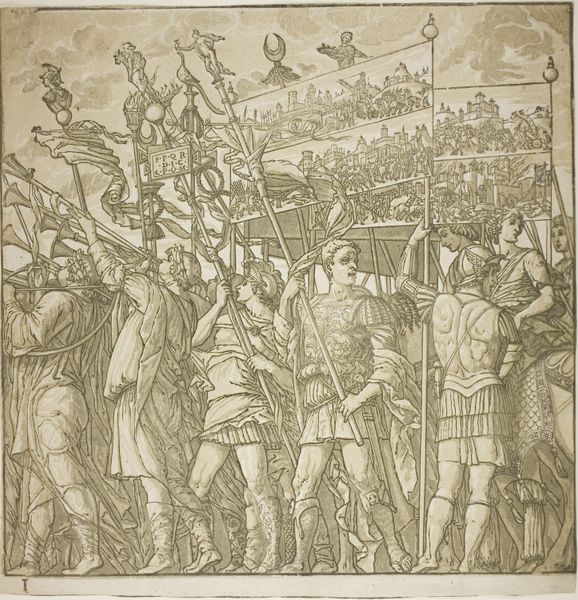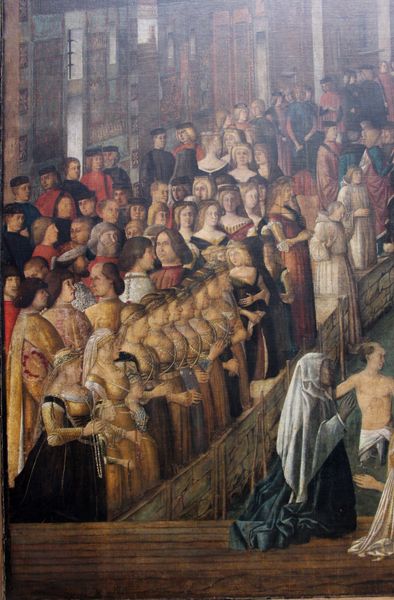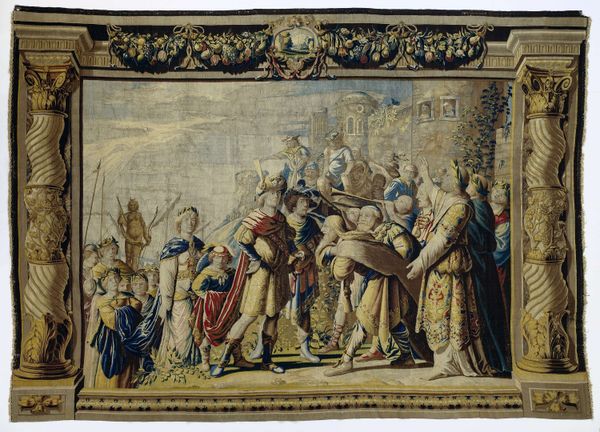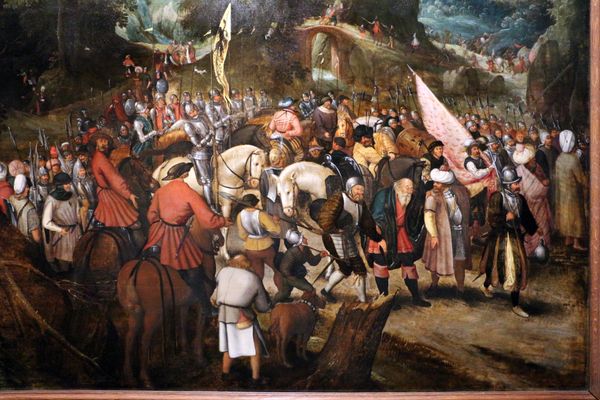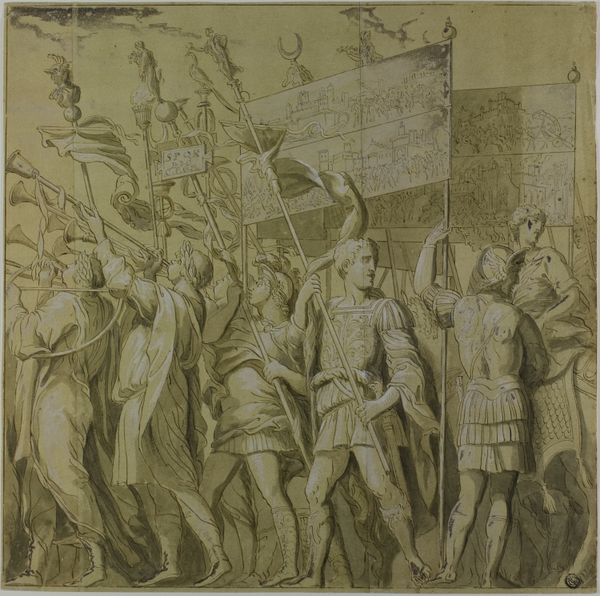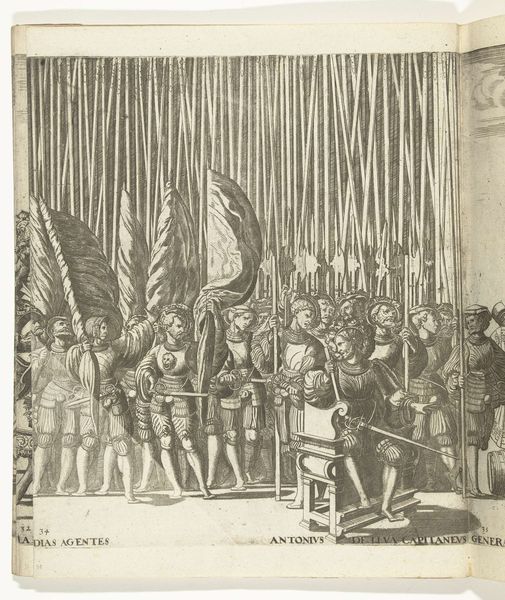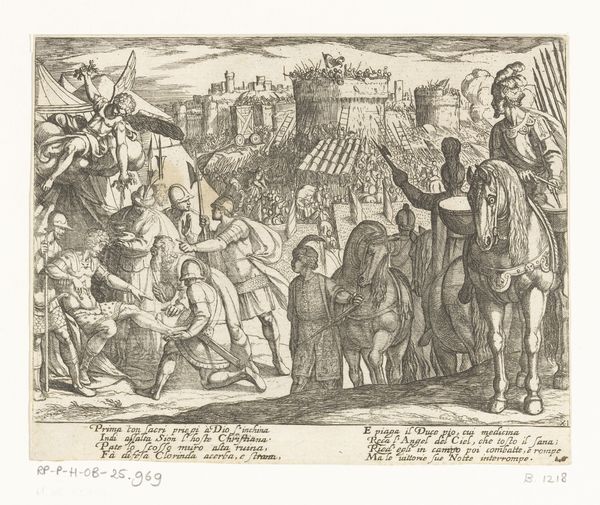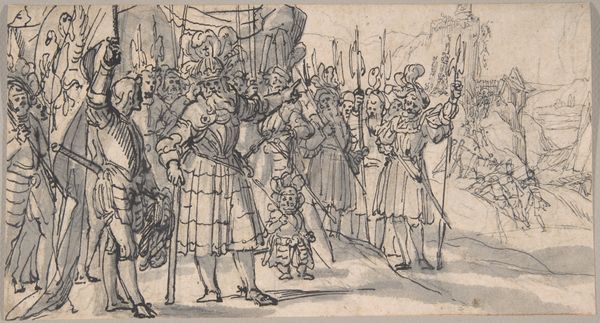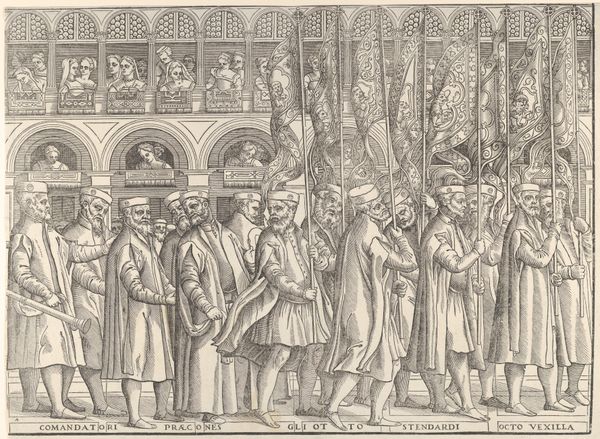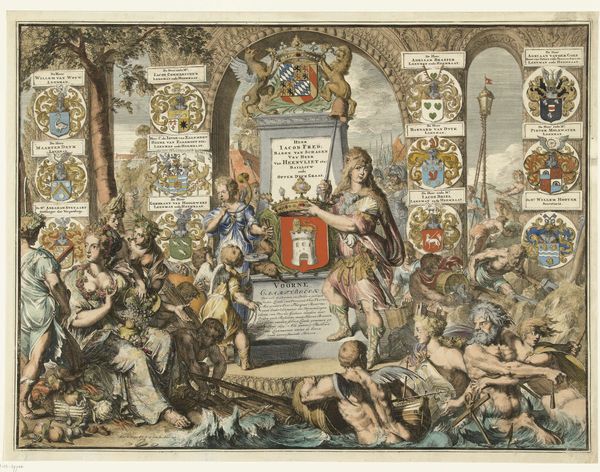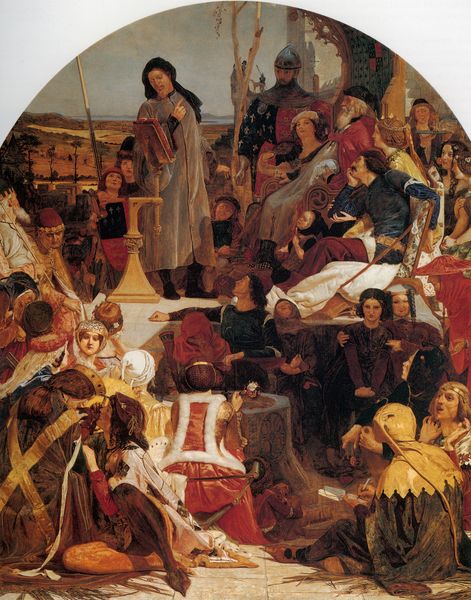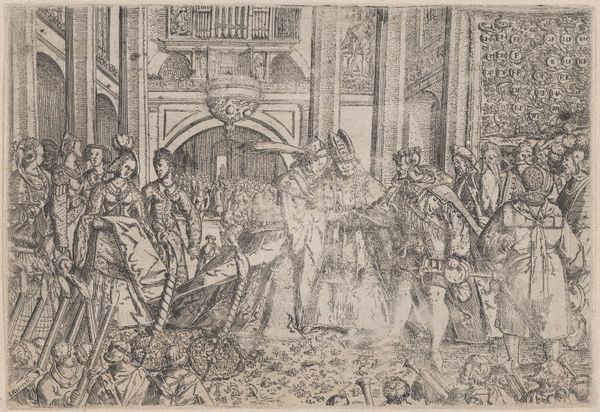
Allegory of the Tyranny of the Duke of Alba in the Netherlands c. 1622 - 1630
0:00
0:00
painting, oil-paint
#
allegory
#
baroque
#
painting
#
oil-paint
#
oil painting
#
group-portraits
#
genre-painting
#
history-painting
#
mixed media
#
watercolor
Dimensions: support height 76 cm, support width 117 cm, outer size depth 3.0 cm
Copyright: Rijks Museum: Open Domain
Curator: This compelling oil painting is titled "Allegory of the Tyranny of the Duke of Alba in the Netherlands." Although we don't know the artist’s name, it’s thought to have been created sometime between 1622 and 1630. It resides here with us at the Rijksmuseum. Editor: My initial feeling? It’s like stumbling into a complex historical drama, dense with symbolism and subdued colors—mostly browns, reds, and creamy yellows. All those faces pressed together create a heavy atmosphere. Curator: Indeed. This piece isn't just a visual representation; it's a powerful political statement reflecting the socio-political turmoil of the Netherlands under Spanish rule. It's ripe for deconstruction. The central figure likely represents the Duke of Alba himself, his tyranny embodied in the surrounding scenes of suffering and injustice. Consider, too, how religion likely factored into this political unrest. Editor: I'm sensing a deep sense of oppression, a feeling like everyone in the painting is holding their breath. The way the artist crams so many figures into the space amplifies that tension. What are your thoughts on the scale? I mean, in person it isn't all that imposing, is it? Yet the event it depicts looms so large historically. It’s almost…claustrophobic in its storytelling. Curator: I see what you mean, that spatial tension reinforces the themes of control and the lack of freedom during that period. And note the artist's usage of allegory, typical of Baroque art, to convey complex political and moral messages, layering meaning and critique beneath a surface narrative. This approach enabled critiques that might otherwise have been silenced. It prompts viewers to actively interpret the injustices represented and consider their historical context within evolving political struggles. Editor: Makes you wonder about the artist's intentions, their place within the conflict. It has an unresolved energy; it’s a kind of visual accusation. Almost like shouting in a hushed voice. I guess what hits me hardest is this enduring feeling of weighted history. Curator: And perhaps that's its most potent quality—it is a reminder that the struggles of the past still echo through art today. The painting also encourages viewers to explore their own historical blind spots and assumptions. Editor: Absolutely, I find that the personal element – grappling with the past while present to ourselves– stays with me long after leaving this spot in the museum.
Comments
No comments
Be the first to comment and join the conversation on the ultimate creative platform.
